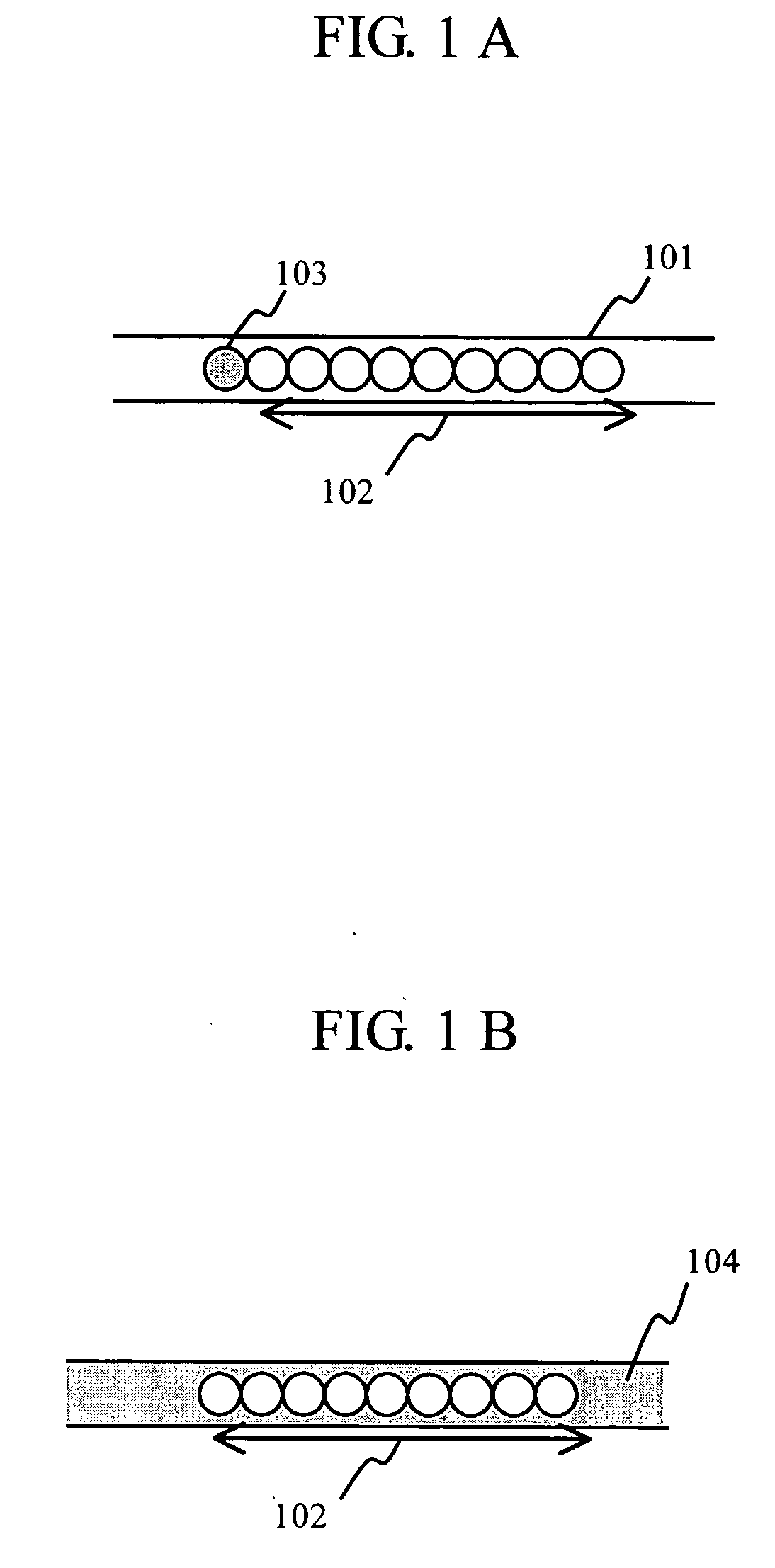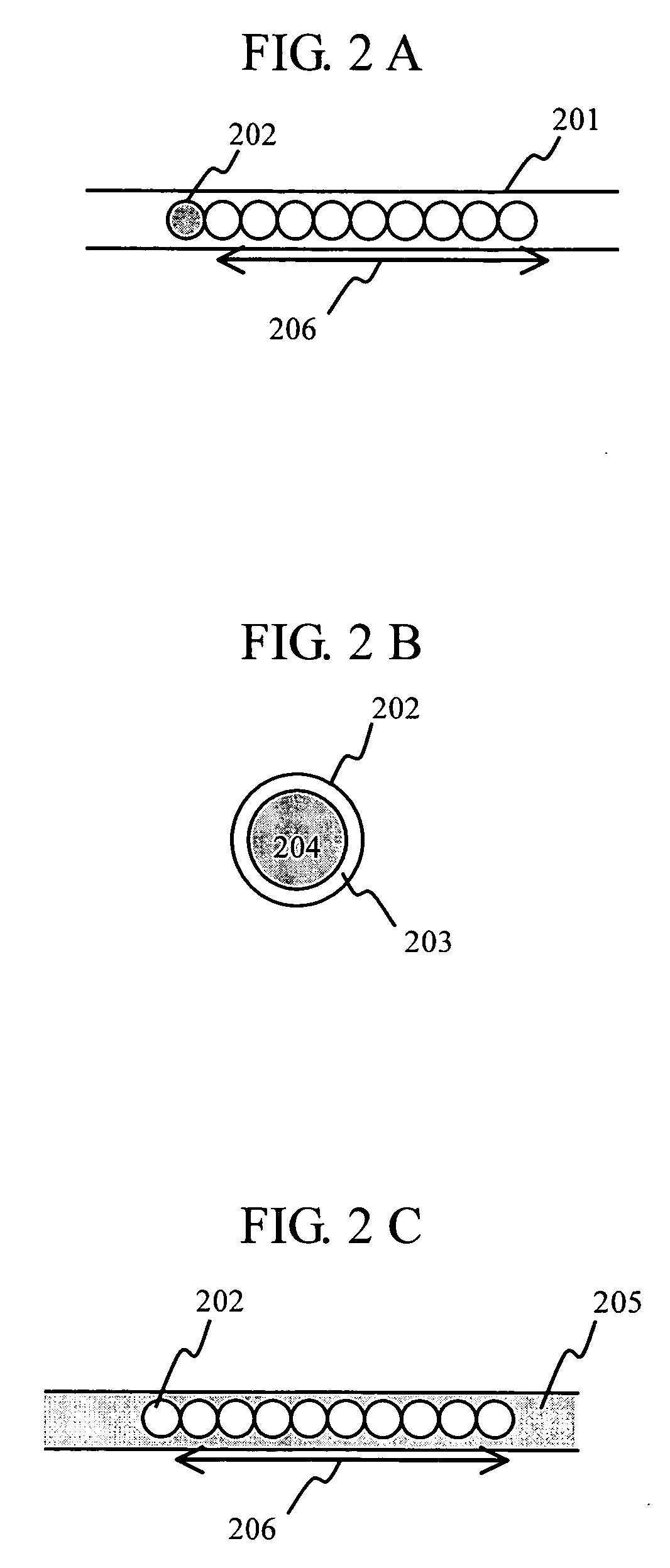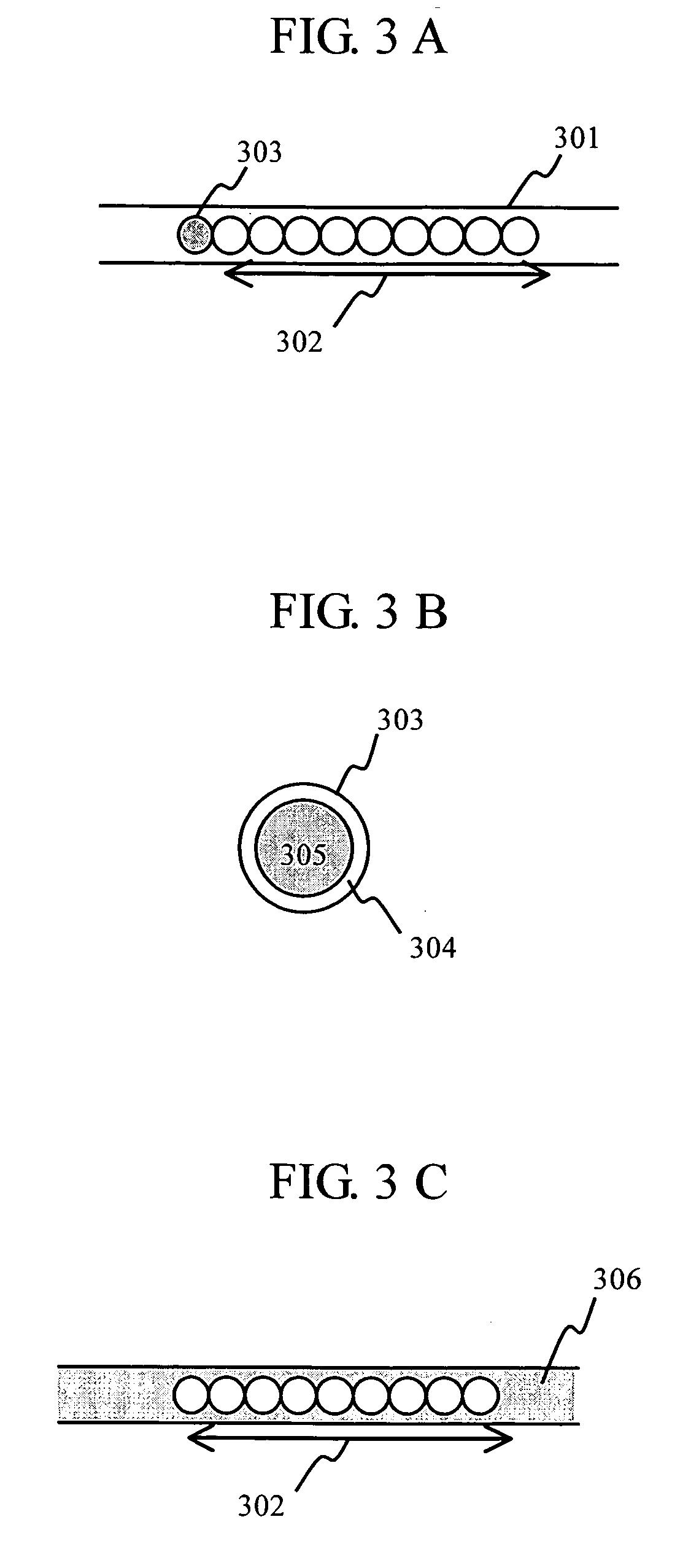Functional particle array and method of use thereof
a technology of functional particles and arrays, applied in the field of capillary bead arrays, can solve the problem of not being able to separate and purify the target molecules beforehand, and achieve the effect of high added valu
- Summary
- Abstract
- Description
- Claims
- Application Information
AI Technical Summary
Benefits of technology
Problems solved by technology
Method used
Image
Examples
example 1
Agent Tablet
[0042]FIG. 1A and 1B show functional particle array arranged with a particle formed of an agent or the like in tablet that exerts a chemical effect on probe beads or target molecules captured by the probe beads and a method of use thereof.
[0043] When a solution having a temperature and composition corresponding to the solubility of the agent is added to the particle array (FIG. 1A) arranged with an agent particle 103 together with probe beads 102 in a capillary 101, the agent particle 103 is dissolved and eluted in the capillary 101, and the capillary is filled with a solution of the agent 104 (FIG. 1B). For example, when particles of two kinds of agents significantly different in solubility from each other are arrayed in a capillary, it is also possible to dissolve only the particle of one agent leaving the particle of the other agent undissolved by appropriately selecting the temperature and composition of the solution added into the capillary 101. In FIG. 1, only on...
example 2
Microcapsule
[0044]FIG. 2A to 2C show functional particle array arranged with a microcapsule containing a solution of an agent or the like that exerts a chemical effect on probe beads or target molecules captured by the probe beads as a core substance and a method of use thereof. Here, the microcapsule indicates an encapsulated particle containing a core substance within a particulate container formed of a capsule shell material. Physicochemical properties of the microcapsule widely vary depending on the kind of the capsule shell material and the kind of the core substance. Further, the microcapsule can be allowed to have a property to gradually release the core substance to the outside of the capsule shell material, that is, sustained-release. By adding a solution having a temperature and composition in accordance with the kind of a capsule shell material 203 of a microcapsule 202 and an agent 204 corresponding to the core substance into a capillary 201 (FIG. 2A) arrayed with the m...
example 3
[0045]FIG. 3A to 3C show functional particle array arranged with a vesicle containing an agent or the like that exerts a chemical effect on probe beads or target molecules captured by the probe beads as a core substance and a method of use thereof. Here, the vesicle is an encapsulated particle prepared artificially by encapsulating a liquid that is the core substance in spherical particles formed of a membrane of an amphipathic substance such as lipid bilayer membrane. The core substance for the vesicle is in general an aqueous solution of an agent or an enzyme. The vesicle having an outer membrane formed of phospholipid such as lecithin is specifically called liposome. The vesicle is an artificially made encapsulated particle for the purpose of elucidating and mimicking various properties of biomembrane. The outer membrane shapes and physicochemical properties of the vesicle markedly differ depending on the kind and composition of the amphipathic substance forming the outer...
PUM
| Property | Measurement | Unit |
|---|---|---|
| chemical effect | aaaaa | aaaaa |
| specific surface area | aaaaa | aaaaa |
| adsorption | aaaaa | aaaaa |
Abstract
Description
Claims
Application Information
 Login to View More
Login to View More - R&D
- Intellectual Property
- Life Sciences
- Materials
- Tech Scout
- Unparalleled Data Quality
- Higher Quality Content
- 60% Fewer Hallucinations
Browse by: Latest US Patents, China's latest patents, Technical Efficacy Thesaurus, Application Domain, Technology Topic, Popular Technical Reports.
© 2025 PatSnap. All rights reserved.Legal|Privacy policy|Modern Slavery Act Transparency Statement|Sitemap|About US| Contact US: help@patsnap.com



